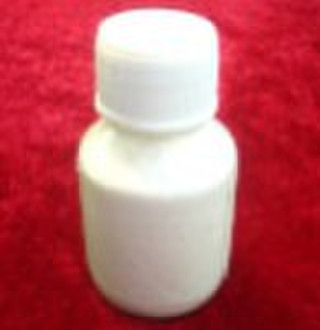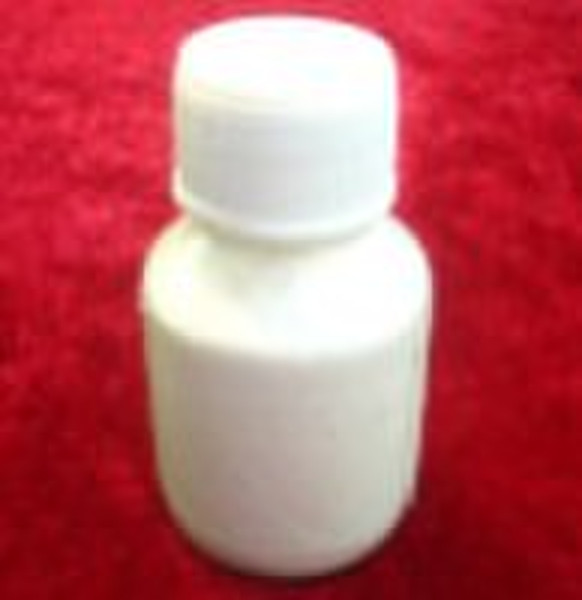Tetramethrin 95% TC

Lucy Yu
联系人姓名
基本信息
| 国 | 粉 |
|---|---|
| 分类 | Insecticide |
| 化学文摘社编号. | 7696-12-0 |
| 其他的名字 | Tetramethrin |
| 小额信贷 | C19H25NO4 |
| 出生地 | Henan China (Mainland) |
| 纯洁的 | 95% |
| 适用 | insecticide |
| 牌子的名字 | Labor |
Insecticide pyrethroid NOMENCLATURE Common name tetramethrin (BSI, E-ISO, ANSI); phthalthrin (JMAF) IUPAC name cyclohex-1-ene-1,2-dicarboximidomethyl (1RS,3RS;1RS,3SR)-2,2-dimethyl-3-(2-methylprop-1-enyl)cyclopropanecarboxylate Alt: cyclohex-1-ene-1,2-dicarboximidomethyl (?-cis-trans-chrysanthemate Roth: cyclohex-1-ene-1,2-dicarboximidomethyl (1RS)-cis-trans-2,2-dimethyl-3-(2-methylprop-1-enyl)cyclopropanecarboxylate 3,4,5,6-tetrahydrophthalimidomethyl (?-cis-trans-chrysanthemate Chemical Abstracts name (1,3,4,5,6,7-hexahydro-1,3-dioxo-2H-isoindol-2-yl)methyl 2,2-dimethyl-3-(2-methyl-1-propenyl)cyclopropanecarboxylate CAS RN [7696-12-0] EEC no. 213-711-6 Development codes FMC 9260; SP 1103 (Sumitomo) Official codes OMS 1011 APPLICATIONS Mode of action Non-systemic insecticide with contact action. Gives rapid knockdown. Uses Normally used in combination with synergists (e.g. piperonyl butoxide) and other insecticides for control of flies, cockroaches, mosquitoes, wasps, and other insect pests in public health and home and garden use. Formulation types AE; DP; EC; EW; OE; UL; Oil. Compatibility Incompatible with mineral carriers such as kieselguhr, acidic clays and kaolin. Selected tradenames: 'Neo-Pynamin' (Sumitomo); mixtures: 'Chinethrin' (+ permethrin+ piperonyl butoxide) (Agro-Chemie); 'Duracide' (+ piperonyl butoxide) (Endura) OTHER TRADENAMES 'Killgerm Py-Kill' (Killgerm) mixtures: 'Pesguard NB' (+ piperonyl butoxide) (Sumitomo); 'Duracide P' (+ permethrin+ piperonyl butoxide) (Endura); 'Killgerm ULV 500' (+ phenothrin [(1R)-trans- isomer]) (Killgerm); 'Lexan Forte' (+ chlorpyrifos) (Kwizda); 'Phinco - T 22' (+ permethrin+ piperonyl butoxide) (Vapco); 'Tornado-Forte+' (+ lambda-cyhalothrin+ piperonyl butoxide) (Vapco) Discontinued names mixtures: 'Duracide Cyp' * (+ cypermethrin+ piperonyl butoxide) (Endura) ANALYSIS Product analysis of pyrethroids reviewed by E. Papadopoulou-Mourkidou in Comp. Analyt. Profiles. By glc (M. Horiba et al., Botyu-Kagaku, 1975, 40, 123), or by u.v. spectrometry (J. Miyamoto, Anal. Methods Pestic. Plant Growth Regul., 1973, 7, 345). Tetramethrin: MAMMALIAN TOXICOLOGY Reviews See A. J. Gray & D. M. Soderlund, Chapt. 5 in "Insecticides". Oral Acute oral LD50 for rats >5000 mg/kg. Skin and eye Acute percutaneous LD50 for rabbits >2000 mg/kg. Non-irritant to skin. Inhalation LC50 (4 h) for rats >2.73 mg/l air. NOEL In 13 w feeding trials, dogs receiving 5000 mg/kg diet showed no ill-effects. In 6 mo feeding trials, no-effect level for rats was 1500 mg/kg diet. Other No evidence of oncogenicity. Toxicity class WHO (a.i.) III (Table 5); EPA (formulation) IV Tetramethrin: ECOTOXICOLOGY Birds Acute oral LD50 for bobwhite quail >2250 mg/kg. Dietary LC50 for bobwhite quail and mallard ducks >5620 ppm. Fish LC50 (96 h) for rainbow trout 3.7, bluegill sunfish 16 mg/l. Daphnia EC50 (48 h) 0.11 mg/l. Bees Toxic to bees. ENVIRONMENTAL FATE EHC 98 (WHO, 1990). EHC 98 notes rapid abiotic degradation in air and water, rapid metabolism and excretion in mammals, and no tendency to accumulate in tissues. Animals In rats, following oral administration, around 95% of tetramethrin (metabolised) is eliminated in the urine and faeces within 5 days. The principal metabolite is 3-hydroxycyclohexan-1,2-dicarboximide (J. Miyamoto et al., J. Agric. Biol. Chem., 1968, 32, 628). Soil/Environment Degradation involves cleavage of the ester bond, leading to chrysanthemic acid derivatives and phenoxybenzoic acid. These are further metabolised by hydroxylation and conjugation.
交货条款及包装
Packaging Detail: 20kg/drum Delivery Detail: within 20days upon receiving your original L/C or payment
端口: China main port
付款条款
Letter of credit
Telegraphic transfer
-
支付方式
我们接受:









